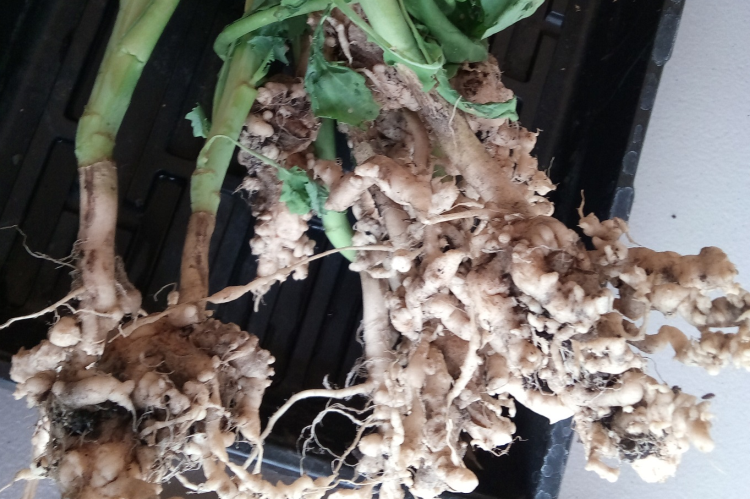Winter Oilseed Rape – Clubroot
22 August 2019Clubroot is a major issue in rape in our arable rotations with over 50% of fields used for rape carrying the disease – and in areas like Aberdeenshire, the incidence is higher with the majority of fields affected.
Knowing which fields are infected and making basic decisions about good hygiene when moving machinery around the farm and perhaps finishing operations in infected fields. Cleaning down equipment remains important and applies to both farm owned and contractor equipment – the risk of spreading infection between fields and farms is very high and some machinery can potentially carry tonnes of soil if it isn’t cleaned off. Contractors should be particularly careful obviously. Starting in an infected field and then trundling straight into a clean field is asking for trouble. There is currently an AHDB funded project running which is mapping fields for clubroot and the infection maps show really clearly how often there is a tell-tale patch of infection at the gate, followed by tails of infection as this is spread out through cultivations.
Testing fields adds to the information you have to plan with. Soil testing for the disease is available from a number of sources. If a field is infected you can of course drill a variety listed as clubroot resistant such as Mentor. However, Mentor carries the same resistance mechanism as previous resistant varieties such as Cracker and Mendel and evidence shows that, after two or three uses in the same field, strains of clubroot which can overcome resistance emerge. The current project shows these strains are common throughout the UK and if fields where resistance has been deployed several times before it ceases to be an effective strategy. Consequently, planning rotations is really important so that you keep fields profitable for the long term and don’t solve the problem temporarily for this year and next, but end up in a worse position than ever within the decade. Clubroot persists for up to 20 years in the soil which is clearly way beyond what can be handled by sensible rotation, but even stretching oilseed rape rotations out in infected fields from three out to four or five years is enough to make a difference to infection levels and reduce pressure on that resistance mechanism. Clearly, the one-year-in-two type of approach to growing rape in some fields will really accelerate the risk.
Current advice on clubroot is, therefore:-
• Test soils for clubroot and pH and use results to plan a strategy for the farm.
• Pay attention to hygiene and soil movement.
• Rotations of greater than 1 year in 5 are likely to be beneficial.
• Avoid early sowing on infected sites
• Avoid over-reliance on resistant varieties in short rotations
• Only deploy resistant varieties where justified by disease level to avoid overuse and selection of virulent clubroot strains
• Maintain higher pHs on infected sites and use long rotations.
• Spot treat infected patches in fields with lime
• Always investigate patches of poor emergence or growth to see if clubroot is the cause
Sign up to the FAS newsletter
Receive updates on news, events and publications from Scotland’s Farm Advisory Service

